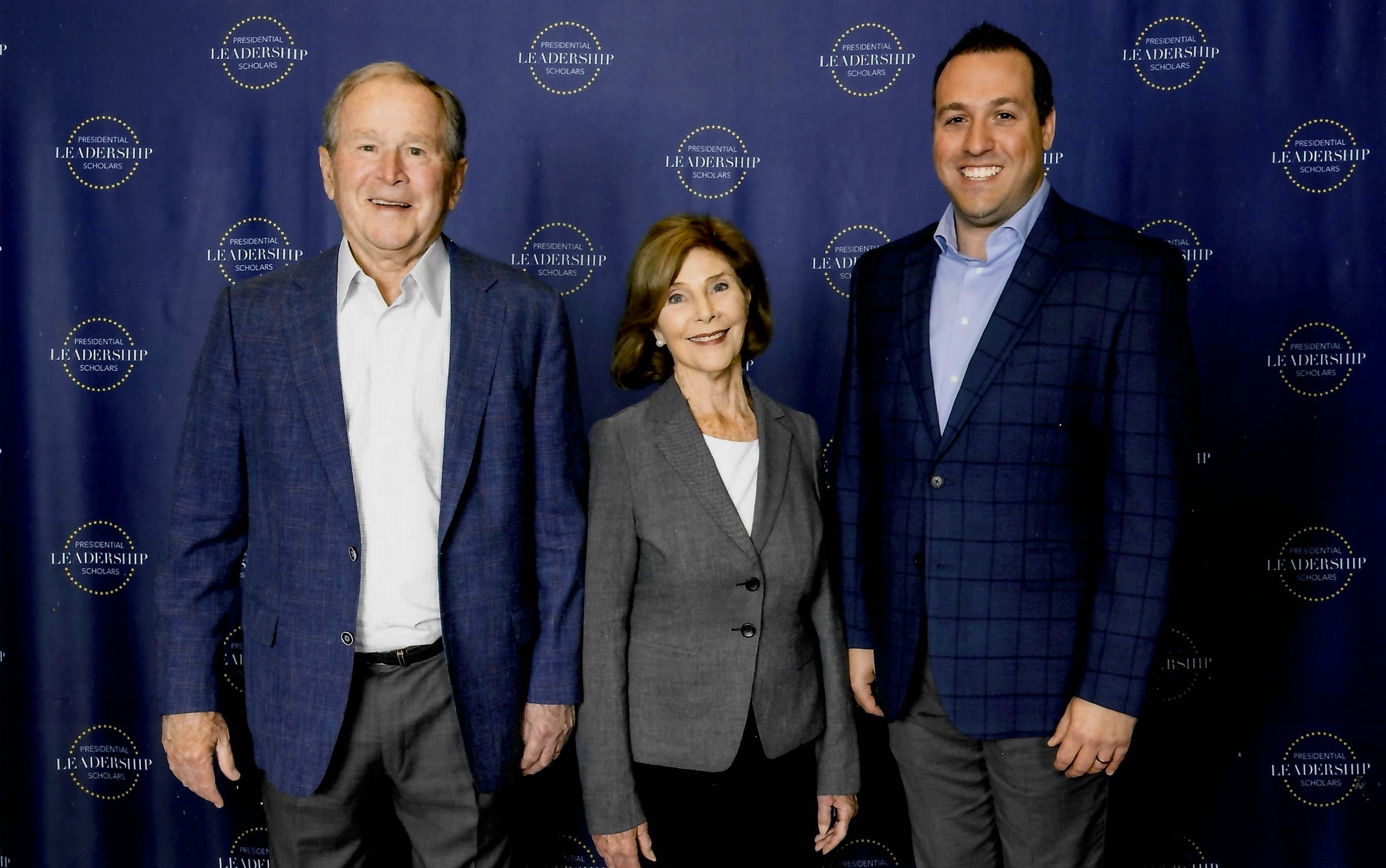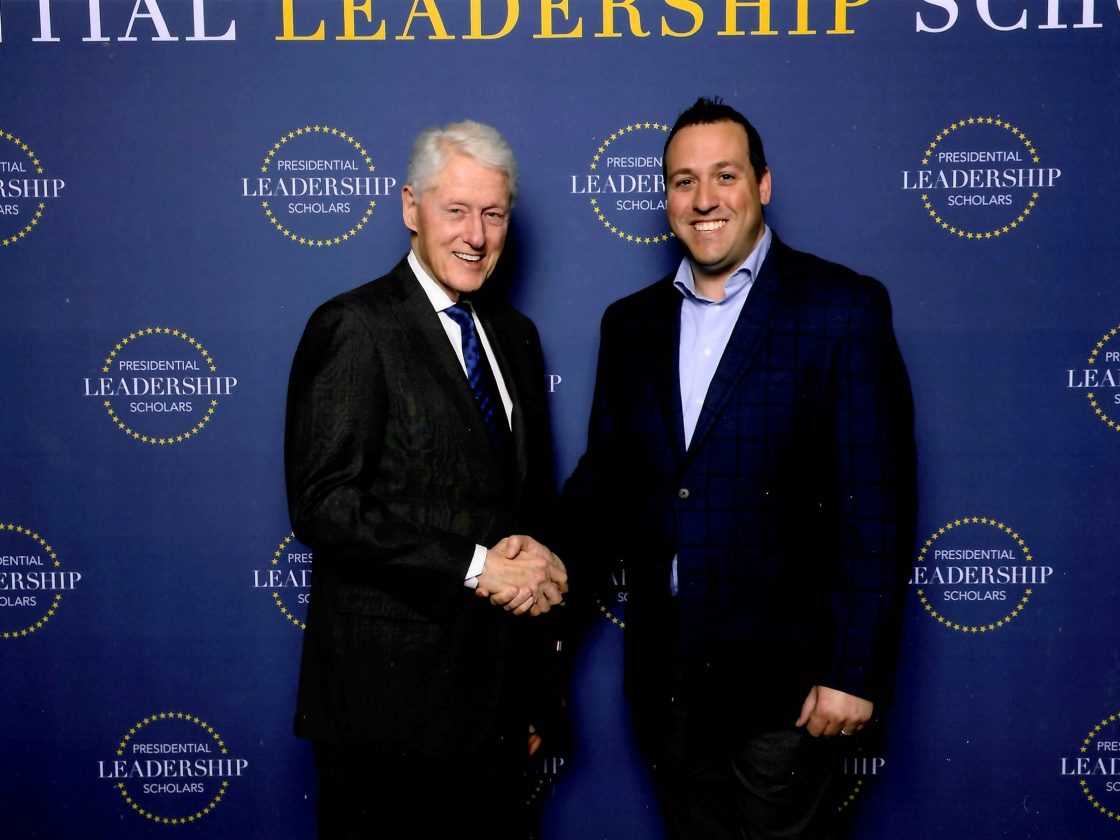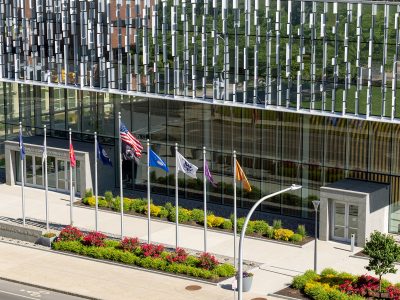Humility and Intention: Ray Toenniessen ’06 on the Lessons of Being a Presidential Leadership Scholar
Standing before the Tomb of the Unknown Soldier at Arlington National Cemetery, surrounded by his peers in the 10th annual class of Presidential Leadership Scholars, Ray Toenniessen ’06 felt clarity, focused by the stillness and weight of sacrifice around them.
In that moment, three of his classmates and the program’s retiring co-director Mike Hemphill—all fellow veterans—laid a wreath at the tomb. Watching them, the deputy executive director of the D’Aniello Institute for Veterans and Military Families felt the lessons of everything he’d learned, questioned and wrestled with throughout the program—and through lectures and meetings with two former presidents—coalesce into one realization. Leadership is about responsibility.
“It’s hard to put into words, but it was a very deep moment of connection and reflection amongst the class,” he says.
The cemetery visit was made during the six-month program’s final module. During a block of free time, Toenniessen and the handful of other veterans in the cohort arranged to lay a wreath at the Tomb of the Unknown Soldier.
But the entire class ended up joining the group.
With the evidence of the ultimate sacrifice made in service around them, following months of lessons on leadership, Toenniessen says everyone was overcome with emotion.
“We had all formed deep connections, deep relationships by this point,” he says. “Arlington and the tomb, to many of us who served, holds a very personal meaning. And so seeing the class gathered around the tomb was really powerful.”
What It Was Like Participating

Over the course of program, Toenniessen and his 57 classmates gathered for six modules, starting in Philadelphia and ending in the nation’s Capitol, visiting the participating presidential centers in-between: the George W. Bush Center in Dallas, the Clinton Center in Little Rock, the LBJ Library in Austin and then the George H.W. Bush Library Center in College Station.
During each module, the class went through the lessons and learnings from the presidents.
“We did a lot of reading around that specific president, key legislation, oftentimes key speeches, looking at their actions,” Toenniessen says. “Then when you were on site, you were really looking at, ‘Well, what led them to those decisions? Why did LBJ need to be so persuasive? Why was it important to President Bush to build coalitions and partnerships? How is President Clinton such an effective communicator?”
In College Station, Andy Card, who served as George H.W. Bush’s secretary of transportation and later as George W. Bush’s chief of staff, gave a firsthand account of 9/11, telling the scholars about the moment he informed President Bush about the attacks.
In Dallas, the scholars heard Bush speak, then they heard from both President Bill Clinton and former Secretary of State Hillary Clinton, in Little Rock. The talks were followed by dinners, closed to the press, where participants could talk candidly with the former presidents.
“That part of the program is just hands-down one of those experiences that you’ll probably never get again,” Toenniessen says.
Learning also happened outside the focus on the former presidents, Toenniessen says.
The class was composed of people from all walks of life, different industries and backgrounds, and outside the lectures and program events, the scholars took the opportunity to get to know one another and learn from each other’s experiences.
“We clicked as a cohort very early,” Toenniessen says. “You’re able to lean on folks, not just for things going on in the program, but things that might be happening in your work or professional life.”
The Lessons on Leadership

Toenniessen says one of his biggest takeaways from the program is that with humility and intention—through listening, compromise, courage—it is possible to bridge divides to serve your community.
“In an environment that seems so politically hostile, how do you bring people together with differing views, differing backgrounds and get them to a place where it’s OK to disagree,” Toenniessen says. “But how do we do it from a place of respect and civil discourse and still even be able to maintain friendships and relationships through it.”
Humility was also touched upon by General Peter Pace, a former chairman of the Joint Chiefs of Staff.
“He spoke a lot about starting with humility and not going in guns blazing, but really taking this stance of humility as you’re speaking truth to power,” Toenniessen says.
It’s a lesson from the program that made clear to Toenniessen that real leadership is about showing up, quietly and consistently in service to something greater than oneself.
In a Linkedin post, Toenniessen reflected on his experience in the program, saying it deepened his understanding of leadership.
“It reshaped how I want to lead,” he wrote. “With humility. With intention. And with a commitment to showing up when it matters.”



